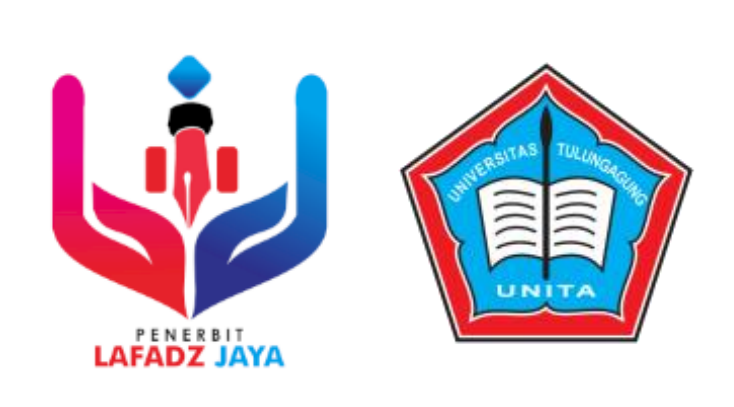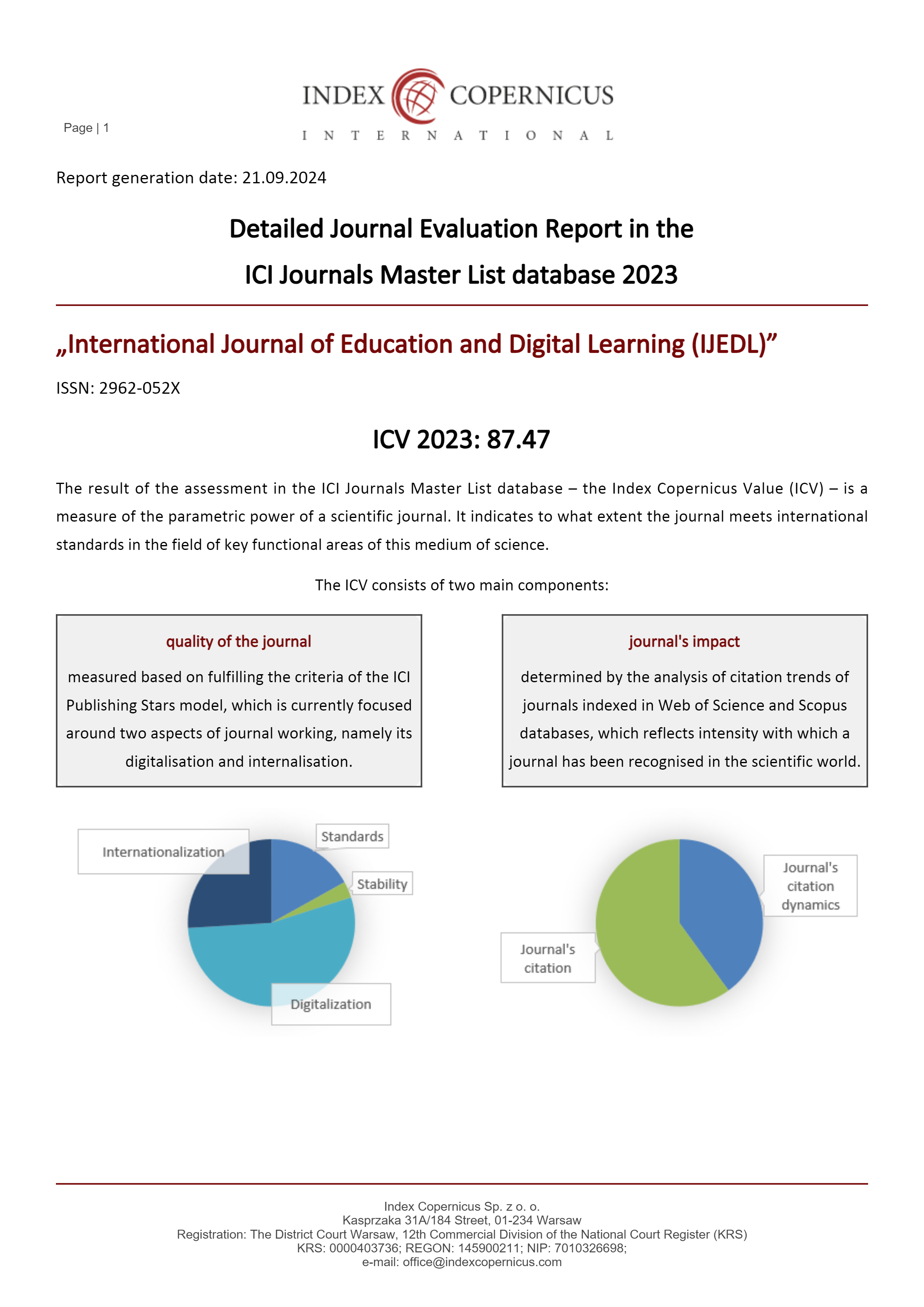Author Guidelines
SCIENTIFIC ARTICLE WRITING INSTRUCTIONS
General Guidelines
International Journal of Education and Digital Learning (IJEDL) publishes articles on education and learning in general. Contains articles / research results written by experts, scientists, practitioners, and reviewers in the field of education and learning. Articles proposed for publication must be articles that have never been published in other scientific magazines. Articles can be written in Indonesian or English by using good and correct written language rules.
The article is written in manuscript form in MS Word with page size A4 (210 x 297 mm) with a left margin of 25 cm, a top margin of 30 cm, a right margin of 20 cm, and a bottom margin of 20. The article is written in a single-column format with a simple text layout. possible. It is recommended to only use the writing facilities provided in MS Word (bold, italics, subtitles, superscript, equations, etc.) and not to use other facilities not available in MS Word (embedded graphic design, embedded symbols, embedded equations, etc.). All text sections in the manuscript are written using Times New Romans 12 pt font and 1.15 spacing.
Special Instructions
The manuscript begins with the title, author's name, author's address, abstract and key words followed by the content section consisting of Introduction, Research Methods (Model Development), Results and Discussion, Conclusions, Acknowledgments, List of Notations (if any), List Libraries and Appendices (Figures and Tables). In writing the manuscript, figures and tables are not presented together with the text in the content section, but in the Appendix section, each of which is equipped with a serial number and the name of the figure and table. The serial number and name of the figure are written at the bottom of the figure, while the table number and name of the table are written at the top of the table. Please ensure that the quality and size of the images presented are large enough to produce good print quality (one page for one image). Please do not give the picture a frame (frame).
1. Title, Author Name, Author Address, Corresponding Author
a. The title of the article is written concisely but informatively. It is advisable not to use abbreviations and formulas that are not widely known.
b. The names of all authors are written under the title of the article in full but without a title. At the end of each name is given a superscript letter to identify the author's address. In addition, it is also necessary to identify the author responsible for the correspondence.
c. Author addresses are written below all author names beginning with the superscript letter corresponding to each author's name.
d. The correspondence address is written in the foot-note on the page containing the name of the author. The address must contain a complete and clear postal address. It also includes e-mail, telephone and facsimile addresses.
2. Abstract and Key Words
a. Abstract written concisely; contains the aims / objectives, results and conclusions to be highlighted. Abstract length is about 150-200 words. Abstracts are recommended not to contain abbreviations or formulas that are not widely known.
b. Immediately below the abstract text, write 6 (six) selected keywords that are appropriate, each separated by a comma (,).
c. Abstract and key words are written in 2 (two) languages, namely Indonesian and English.
3. Introduction
In the introduction section, the background of the research/writing is presented, a brief review of the literature (literature) which explains the state of the art research and the objectives of the research/writing.
4. Research Methods (Model Development)
In this section, the materials used in the research are presented. It is necessary to convey in sufficient detail the research methods used to ensure that the results obtained are reproducible. If the submitted manuscript is a model development, it is necessary to provide a description of the proposed model and how the model is evaluated/used.
5. Results and Discussion
In this section, the results of the research (model development) that were obtained systematically and constructively are presented, accompanied by a comprehensive discussion that supports the research objectives and strengthens the conclusions. Even though the research results are presented in the form of tables or figures, the tables or figures in question are not inserted between the texts but are attached to the appendix section. In the text, it is enough to mention the number and/or the name of the table or figure being discussed.
6. Conclusions
In this section, the main conclusions from the results obtained are briefly presented.
7. Notation
List The Notation List is written in alphabetical order. Latin letter notation (greek) is written in order before the notation of the letters of the alphabet.
8. Writing references
a. References in text
The bibliography source of a quote or excerpt in the text is written in the text section with the following rules:
• Single author: author's last name/surname (without initials, unless there is confusion) and year of publication;
• Two authors: both author's last name and year of publication;
• Three or more authors: the last name of the first author followed by et al. and year of publication.
Library sources can be written directly in the text or in brackets ( ). If there are several sources of literature, the order of writing is alphabetical and then based on the year of publication.
Example: “... as revealed in previous research (Allan, 1996a, 1996b, 1999; Allan and Jones, 1995). Kramer et al. (2000) recently stated that ...”
b. References in the Bibliography
The bibliography is arranged in alphabetical order by author's last name and time (if needed). If there are several literatures from the same author for different years, it is necessary to give an index of the letters “a”, “b”, “c”, etc. after the year of publication.
Examples:
• Libraries in the form of scientific magazines/journals/proceedings:
Capek, P., Hejtmanek, V., Solcova, O., Klusacek, K. and Schneider, P., 1997. Gas transport in porous media under dynamic conditions, Catalysis Today 38, 31-38.
• Book-form book:
Strunk Jr., W., White, EB, 1979. The Elements of Style, third ed. Macmillan , New York .
• Review of book reviews with editors:
Mettam, GR, Adams, LB, 1999. In: Jones, BS, Smith , RZ (Eds.), Introduction to the Electronic Age . . . . E-Publishing Inc., New York, pp. 10-11. 281-3








